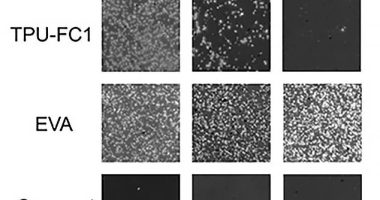
Exercising for just two-and-a-half hours a week can reduce your risk of migraine, a new study suggests.
They found exercising above the two-and-a-half hour threshold – the minimum recommended by the World Health Organisation (WHO) – reduced migraine triggers like anxiety and poor-quality sleep.
In their sample of more than 4,500 adults with migraine, 73 per cent got less than two-and-a-half hours a week, they found.
Migraine is a common health condition, affecting around one in every five women and around one in every 15 men, according to the NHS.


Regular exercise may be an effective way to reduce the frequency and intensity of a migraine, which causes an intense, throbbing pain that
‘Migraine is a disabling condition that affects millions of people in the US and yet regular exercise may be an effective way to reduce the frequency and intensity,’ said study author Dr Mason Dyess of the University of Washington in Seattle.
‘Exercise releases natural pain killers called endorphins, helps people sleep better and reduces stress.
‘But if people with migraine are not exercising, they may not be reaping these benefits.’
When most of us hear the word ‘migraine’, we tend to think of a really severe headache.
One sufferer in the UK described a migraine as a ‘throbbing, pounding pain that’s so intense you’d do anything to make it stop’.
But headaches are only one symptom of migraines, and they can range in severity and length, according to another expert.
‘Migraines are a neurological disease that involve nerve pathways and chemicals,’ said Brandeis Brockman, nurse practitioner at Delancey Internal Medicine in the US, who was not involved with this study.
According to Dr Dyess, headache is an umbrella term that includes migraines.
Dr Dyess and his team looked specifically at three causes or ‘triggers’ of migraine that are listed on the NHS’s website –depression, anxiety and sleep problems.
The study involved 4,647 people, all of whom had been diagnosed with migraine, but with different levels of severity.
Approximately three-quarters experienced ‘chronic’ migraine, meaning they had 15 or more migraines a month. The others had ‘episodic’ migraine – up to 14 a month.
Participants completed a questionnaire about their migraine characteristics, sleep, depression, stress, anxiety and the amount of ‘moderate to vigorous’ exercise they got each week.
Types of exercise that qualified as ‘moderate to vigorous’ included jogging, very brisk walking, playing a sport, bicycling and even ‘heavy cleaning’.
Researchers divided participants into five groups based on level of moderate to vigorous weekly exercise – zero minutes, one to 30 minutes, 31 to 90 minutes, 91 minutes to two-and-a-half hours, and more than two-and-a-half hours.
They found that 1,270 people (27 per cent) of all the people in the study reported getting the highest amount of exercise (more than two-and-a-half hours a week).
On top of this, people who got less than two-and-a-half hours of moderate to vigorous exercise per week had increased rates of the three triggers – depression, anxiety and sleep problems.
Depression was reported by 47 per cent of people in the group that did not exercise, or 377 of 806 people, compared to 25 per cent of people in the group that exercised the most, or 318 of 1,270 people.
In addition, anxiety was reported by 39 per cent of people in the no exercise group compared to 28 per cent of the people in the high exercise group.
Lastly, sleep problems were reported by 77 per cent of people in the no exercise group compared to 61 per cent in the high exercise group.


People who got less than two-and-a-half hours of moderate to vigorous exercise per week had increased rates of the three triggers – depression, anxiety and sleep problems (stock image)
‘Our analysis suggests that exercise level below the recommended level by WHO is correlated with an increased rate of depression, anxiety and sleep problems,’ the experts report.
Researchers also found an association between exercise and the risk of migraines or any other type of headache.
Of people in the no exercise group, 5 per cent had low headache frequency, defined as zero to four headache days per month, and 48 per cent had high headache frequency, defined as having 25 or more headache days per month.
Of the people in the high exercise group who exercised more than two-and-a-half hours a week, 10 per cent had low headache frequency and 28 per cent had high headache frequency.
While there are some medicines for migraines, including some types of sleeping tablets, exercise might be the cheapest treatment there is.
‘There are new therapeutics available for migraine, but they are very expensive,’ said Dr Dyess, who will be presenting his findings at the American Academy of Neurology’s 73rd Annual Meeting, which is being held virtually from April 17 to 22.
‘People with migraine should consider incorporating more exercise into their daily life because it may be a safe and low-cost way to manage and minimise some of the other problems that often accompany migraine.’
According to the NHS, physical triggers like poor posture, and strenuous exercise if you’re not used to it can all cause migraines too.
Dietary triggers include missed, delayed or irregular meals, dehydration, alcohol, caffeine and foods containing the substance tyramine.
Tyramine is found in cured meats, yeast extracts, pickled herrings, smoked fish and certain cheeses such as cheddar, stilton and camembert.









